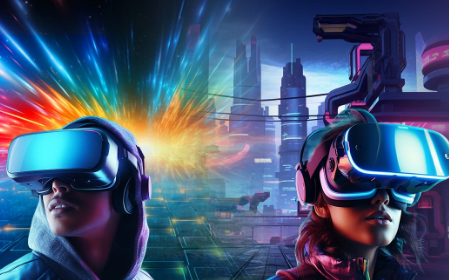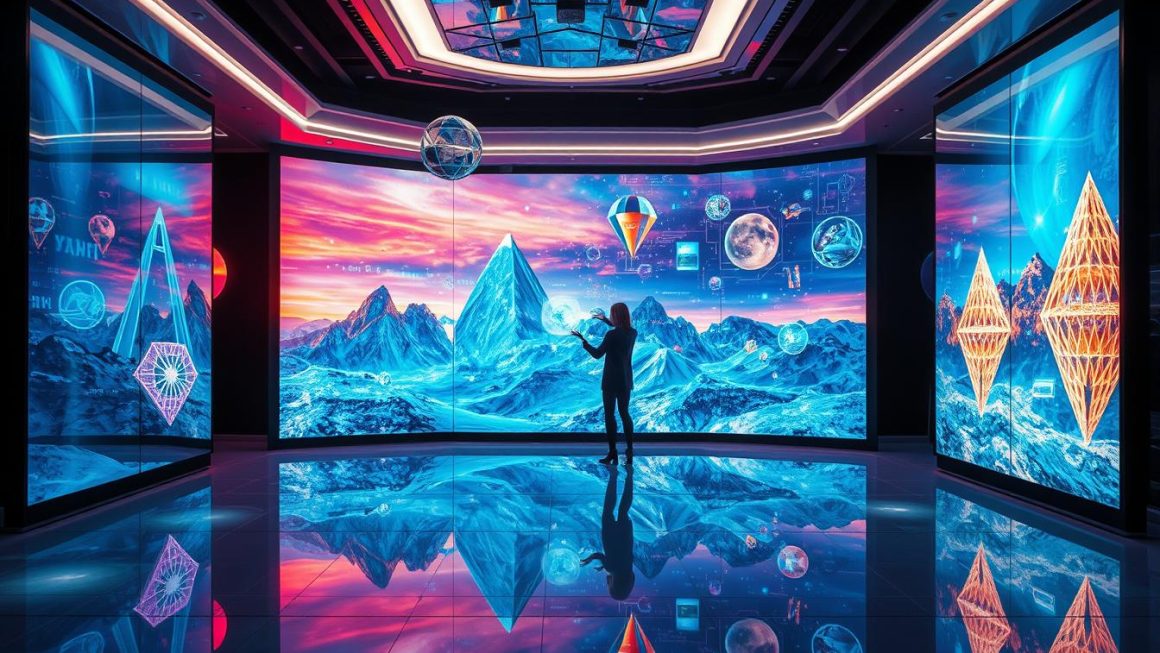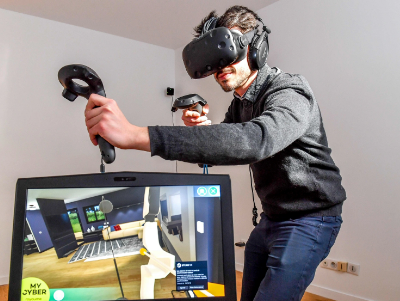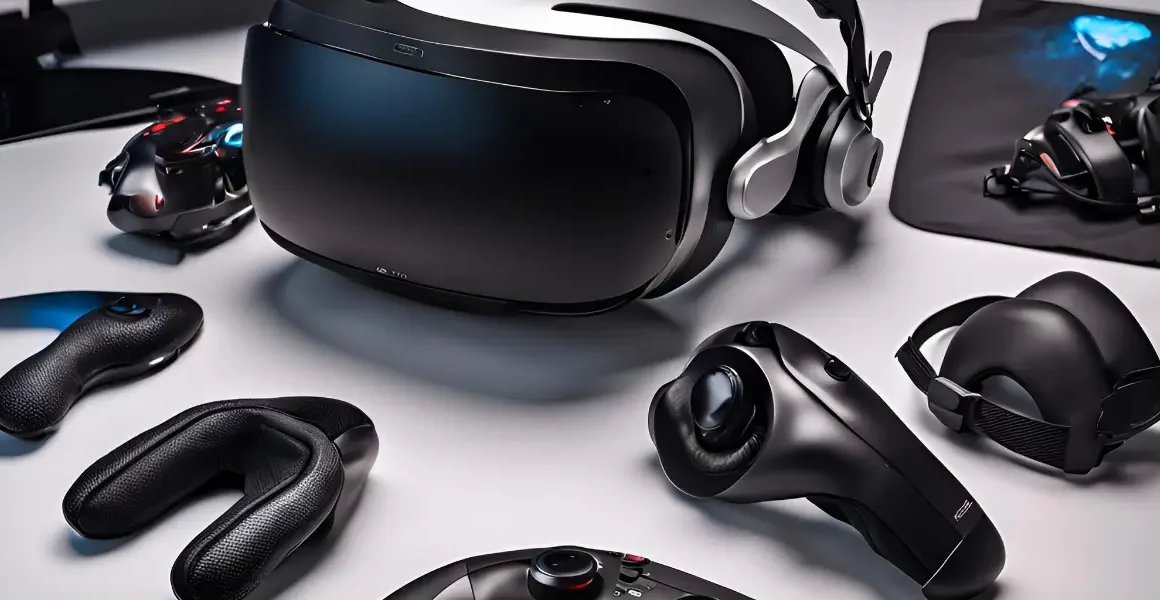
Virtual reality (VR) has transcended its gaming origins to become a transformative force across multiple industries. Recent studies show that the global VR market is projected to reach $92.31 billion by 2027, highlighting its significant impact on how we work, learn, and interact in the digital age.
Understanding Virtual Reality Technology
Virtual reality technology creates an immersive, computer-generated environment that users can interact with through specialized hardware. Modern VR systems combine high-resolution displays, motion sensors, and haptic controllers to deliver realistic experiences that fool our senses into believing we’re somewhere else entirely.
The core components of VR systems include:
The headset serves as the primary display device, equipped with high-resolution screens and advanced motion tracking capabilities. Motion controllers enable natural interaction within virtual environments, while spatial audio systems provide 360-degree sound for complete immersion. These elements work together to create what experts call “presence” – the psychological sensation of being physically present in a virtual space.
Revolutionary Applications Across Industries
Entertainment and Gaming
The gaming industry continues to lead VR innovation, with platforms like Meta Quest and PlayStation VR pushing boundaries in interactive entertainment. Beyond traditional gaming, VR has opened new possibilities for virtual concerts, interactive movies, and social spaces where people can connect regardless of physical distance.
Education and Professional Training
Educational institutions and corporations are leveraging VR’s immersive capabilities to revolutionize learning experiences. Medical students can practice complex procedures without risk, while corporate teams can conduct virtual training sessions that feel remarkably real. The technology has shown particularly impressive results in fields requiring spatial awareness and hands-on experience.
For instance, engineering students can now disassemble virtual engines, while architectural firms use VR to walk clients through building designs before construction begins. This practical, experiential learning approach has demonstrated up to 75% higher retention rates compared to traditional methods.
Healthcare Applications
In healthcare, VR is proving transformative across multiple areas:
The technology has shown remarkable success in pain management, with studies reporting up to 40% reduction in pain levels during VR-assisted procedures. Exposure therapy through VR has revolutionized mental health treatment, allowing patients to confront phobias and anxiety disorders in controlled, safe environments.
Surgeons are using VR for preoperative planning, with detailed 3D visualizations of patient anatomy improving surgical precision and reducing complications. Remote surgery capabilities are expanding access to specialized care in underserved areas.
Benefits and Impact
The adoption of VR technology offers several key advantages:
Cost-effectiveness through reduced need for physical resources and travel. Enhanced safety in training scenarios for high-risk professions. Improved engagement and retention in educational settings. Greater accessibility to experiences and expertise regardless of geographic location.
Future Trends and Developments
As we look toward the future, several exciting developments are emerging:
Haptic feedback technology is becoming more sophisticated, allowing users to “feel” virtual objects. Integration with artificial intelligence is creating more responsive and personalized virtual environments. Lightweight, wireless headsets are making VR more comfortable and accessible for extended use.
Implementation Challenges
While VR technology shows immense promise, organizations should consider:
- Initial infrastructure costs and implementation requirements
- The need for specialized training and technical support
- Various implementation approaches, including non-immersive solutions for specific use cases
Conclusion
Virtual reality technology has moved beyond its entertainment origins to become a powerful tool for transformation across industries. As hardware becomes more sophisticated and applications more diverse, we can expect VR to play an increasingly central role in how we work, learn, and interact.
The technology’s ability to provide immersive, risk-free environments for training, treatment, and collaboration makes it an invaluable asset for organizations looking to innovate and improve outcomes. As we continue to discover new applications and overcome current limitations, VR’s influence on our daily lives will only grow stronger.
Frequently Asked Questions (FAQ) About Virtual Reality Technology
What is Virtual Reality technology and how does it work?
Virtual Reality (VR) is an immersive technology that creates a simulated environment using specialized hardware like headsets and controllers. It works by displaying stereoscopic 3D images through a headset while tracking your movements in real-time. The system combines visual displays, motion sensors, and often haptic feedback to create a convincing sense of presence in a virtual world.
How much does VR equipment typically cost?
The cost of VR equipment varies significantly based on your needs:
- Entry-level VR headsets: $300-500
- Professional-grade systems: $800-2,000
- Enterprise solutions: $3,000+. Additional costs may include powerful computers or workstations needed to run VR applications effectively.
Is Virtual Reality safe for everyone to use?
While VR is generally safe, some users may experience:
- Motion sickness or disorientation (typically mild and temporary)
- Eye strain after prolonged use
- Physical fatigue. It’s recommended to take regular breaks (15 minutes every hour) and follow manufacturer guidelines. People with certain medical conditions should consult healthcare providers before using VR.
What’s the difference between VR, AR, and MR?
- Virtual Reality (VR): Completely immerses users in a virtual environment
- Augmented Reality (AR): Overlays digital content onto the real world
- Mixed Reality (MR): Combines real and virtual elements that can interact with each other. Each technology serves different purposes and has unique applications.
What industries are currently using VR technology?
VR is being utilized across numerous sectors:
- Healthcare (surgical training, therapy)
- Education (interactive learning)
- Real Estate (virtual property tours)
- Manufacturing (design and prototyping)
- Military (combat simulation)
- Entertainment (gaming, virtual concerts)
Do I need a powerful computer to use VR?
Requirements depend on the VR system:
- Standalone headsets (like Meta Quest) don’t require a computer
- PC-based VR typically needs: Modern GPU (NVIDIA GTX 1660 or better), 16GB RAM minimum, Recent CPU (Intel i5/AMD Ryzen 5 or better), and Sufficient USB ports and display outputs
Can VR be used for remote work and collaboration?
Yes, VR offers various collaboration tools:
- Virtual meeting spaces
- 3D design review capabilities
- Training and simulation environments
- Remote assistance applications. These tools can enhance remote work by providing more immersive and interactive experiences than traditional video conferencing.
How long does it take to develop VR content?
Development timelines vary based on complexity:
- Simple VR experiences: 1-3 months
- Educational applications: 3-6 months
- Complex simulations: 6-12 months or more. Factors affecting development include content type, interactivity level, and required features.
What are the limitations of current VR technology?
Current limitations include:
- Hardware constraints (resolution, field of view)
- Battery life for wireless devices
- Physical space requirements
- Content development costs
- Network bandwidth for multiplayer experiences
How can businesses start implementing VR?
Steps for VR implementation:
- Identify specific use cases and objectives
- Evaluate hardware and software requirements
- Consider budget and ROI expectations
- Start with pilot programs
- Train staff and develop support systems
- Scale based on results and feedback



